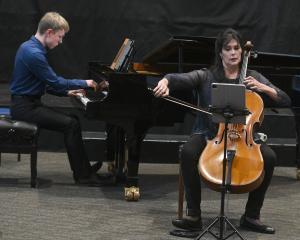
A cutting-edge research team at the University of Otago Christchurch Regenerative Medicine and Tissue Engineering (CReaTE) group has been chosen as an international partner in a major European Union (EU) Horizon-funded consortia project, focused on advancing 3-D bioprinting and regenerative medicine.
CReaTE director Prof Tim Woodfield said his team would play a major role in the €8million ($NZ14.6 million) micro@MACRO (m2M) project, tasked with advancing bioprinting technology for cartilage tissue repair in human patients.
He said CReaTE had been honing its technique using custom-made 3-D printers, laying down cells and bio-inks, layer by layer, to produce complicated, intricate objects.
Patients’ cells would be incorporated into the 3-D printing process to regenerate their tissue, rather than replacing it with an orthopaedic implant.
"Rather than taking individual cells and joining them together, we are making ‘microtissues’ or little spheres of tissue about a millimetre or less and containing about half a million cells each.
"We make thousands of these tissue spheroids at a time and assemble them in layers using our 3-D bioprinter and novel cartilage and bone bio-inks, to build strong tissue.
"The goal is to automate these processes so that the bio-printed construct can then be surgically implanted into patients, and this has led to exciting developments so far."
About 8500 knee replacements are done in New Zealand each year, costing the health system between $26,300 and $32,000 each.
Prof Woodfield said knee replacements were quite common, and the new technology aimed to save the health system money, by making the surgery less invasive and helping people recover more quickly.
"We’re trying to look at ways of regenerating tissue rather than replacing it with materials in some way.
"So that’s where we either use cells and combinations with materials, to repair damaged cartilage or bones.
"The idea is that it’s not necessarily going to replace knees in the future, but the idea is that if you damage your knee cartilage, then we have a way of engineering and repairing it, which might mean you might not need a knee replacement in the future ... Eventually, that might move to hips and other things like this."
He said the procedure would always require some sort of surgery, but in the future, it would be less invasive.
"Kind of a keyhole-type surgery, where you could fix or implant a piece of tissue or inject materials that allow the tissue to repair itself."
He was delighted with CReaTE’s inclusion in the project.
"By making this significant commitment, the EU recognises that advancing stem cell technology and developing new clinical treatments using a patient’s own regenerative tissue is the way of the future for medicine.












